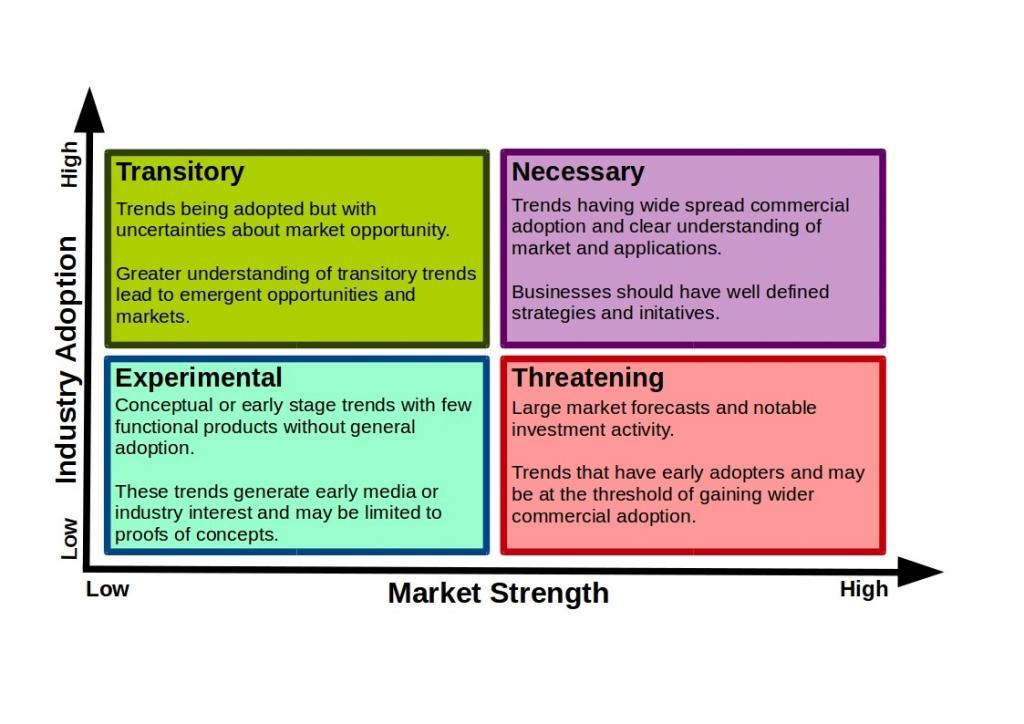In the first of our guest blogs, Omar Bashir, Associate Director at IHS Markit, a world leader in critical information, analytics and solutions, outlines how leaders can keep abreast of the trends that can impact their business. Learn more about Omar through his LinkedIn profile
Knowing your Industry Trends
Mission statements of all business organisations focus on one common fundamental – to build and maintain a competitive edge that increases their market share leading to higher revenues at lower costs. A business competitive edge is a multidimensional concept. These dimensions are quality, innovation, speed, throughput and economy. Companies that consistently lead in their industry sectors are known to do better, faster, more and cheaper.
Business process improvement, technological innovation and product development affect these dimensions. Academic and industrial research and development drive these advancements at an ever-escalating pace. Business leaders who lead their firms to commercial success always keep abreast with and adopt advancements in their industries. Conversely, procrastination in staying informed and transforming with relevant trends eventually leads to disruption causing firms to lose their competitive edge.
Awareness of industry developments can be gained through industry publications, conferences and news reports. Membership of professional bodies and standards organisations provides opportunities to actively pursue innovation. Social media, like LinkedIn or Twitter, is playing a huge role in connecting professionals together and providing platforms to share information and insights across industries. Experts and evangelists also publish their insights via social media and through other professional websites. Finally, keeping a close eye on competitors can yield significant intelligence to drive your competitive innovation agenda.
With ever increasing knowledge and progressive reduction in time to disruption, any knowledge assimilation strategy needs to be practical and sustainable. The following paragraphs describe means to filter and prioritise information to avoid overload and remain aligned to business objectives.
Managing Information Overload
A modern business leader needs to employ strategies to quickly prioritise the trends that they need to focus on while staying informed about others. The good news is that several industry research firms and a few consultancies have developed frameworks that assist in distilling relevant trends for busy professionals and executives.
A framework that business leaders may find useful is NExTT produced by a market intelligence firm CB Insights. NExTT is the acronym for Necessary, Experimental, Threatening and Transitory. Based on industry adoption and market strength, trends can be included in and moved between these groups. The Following figure shows how this framework can be used to prioritise trends for any industry.

CB Insight’s NExTT Framework
Another such framework is the Technology Radar regularly published by ThoughtWorks, a global technology consultancy. Trends appear as blips on the radar. Like a classical radar scope, Technology Radar is divided into quadrants and rings. Quadrants group trends in related topics or categories, e.g., infrastructure, languages, tools, processes. Rings define adoption priorities. The closer a blip is to the centre, the higher is its disruption potential and more urgent it is for readers to focus on it. Technology Radar has four rings, Adopt, Trial, Assess and Hold in increasing distance from the centre.
A NExTT chart or a trends radar can be quite dense. Thus, they still present information overload challenges for busy executives. Furthermore, these may be at relatively low levels for senior executives. Firms and teams can always adapt these by filtering out technologies and processes that are not relevant to them. Additionally, they can use these frameworks at varying levels of detail. Finally, these frameworks can be used for prioritising trends in any business domain for leadership and management to plan transformation and avoid disruption.
Get some help
If you want to discuss your specific situation and see how we can help
Revising Priorities
A trends radar or NExTT chart once created should never be static. It needs to be revised periodically. Even if these are available from other organisations like ThoughtWorks or CB Insights, these must be tailored to a particular firm’s context.
A single individual may struggle to capture and assimilate all this information even with tools and frameworks in place. One option is to crowdsource insights from within the organisation. For instance, a technology organisation can be subdivided into middleware, data management and user experience interest groups who research the application and relevance of latest developments in respective topics. Their feedback is then used to evolve trends radar or NExTT charts that their organisation uses to drive its transformation strategy.
Adoption
Capturing and assimilating knowledge is not always enough to stay ahead of the curve. In many cases, relevance or usefulness of a new industry development is not known unless it is applied and experienced within a specific organisational or business context. Such application may also reveal emergent properties that may not otherwise be obvious.
There are always risks in adopting a new practice, process or technology. Several approaches can be used to mitigate these risks. Initial adoption may happen in a sandbox which is a parallel business environment setup for testing. Once such testing has proven successful, rollout to production business environments can proceed.
Another approach is to decouple various business activities and execute the rollout incrementally starting with the least risky activity. This is also referred to as limiting the blast radius. If an incremental rollout malfunctions, only a part of the business is affected thus limiting the impact to that specific business activity and not the entire operation. Sandboxing and incremental rollouts are not mutually exclusive. A technique can be tested in a sandbox and then incrementally rolled.
Every rollout should have corresponding rollback and recovery processes to mitigate risks of failures and ensure business continuity. If a rollout fails, rollback re-institutes the previous technique or process while recovery restarts business operations from the point of failure.
Futureproof your career event “knowing your industry trends, how to keep pace without being overwhelmed”
Join Omar Bashir as he shares his insights for driving business competitiveness and agility with efficient, useful and usable technology
Link to events “Future proofing your career” Learning from Leaders
In a Nutshell
Keeping pace with an ever-growing body of knowledge is a challenge for every professional. Still it is necessary, especially for those in leadership, to remain informed of emerging trends and plan adoption of those that increase their competitive advantage without disrupting their operations. A strategic approach to prioritising knowledge acquisition is necessary to avoid getting overwhelmed or distracted.
For practical advice on how to keep pace with industry trends without being overwhelmed contact us to discuss how we can help.

